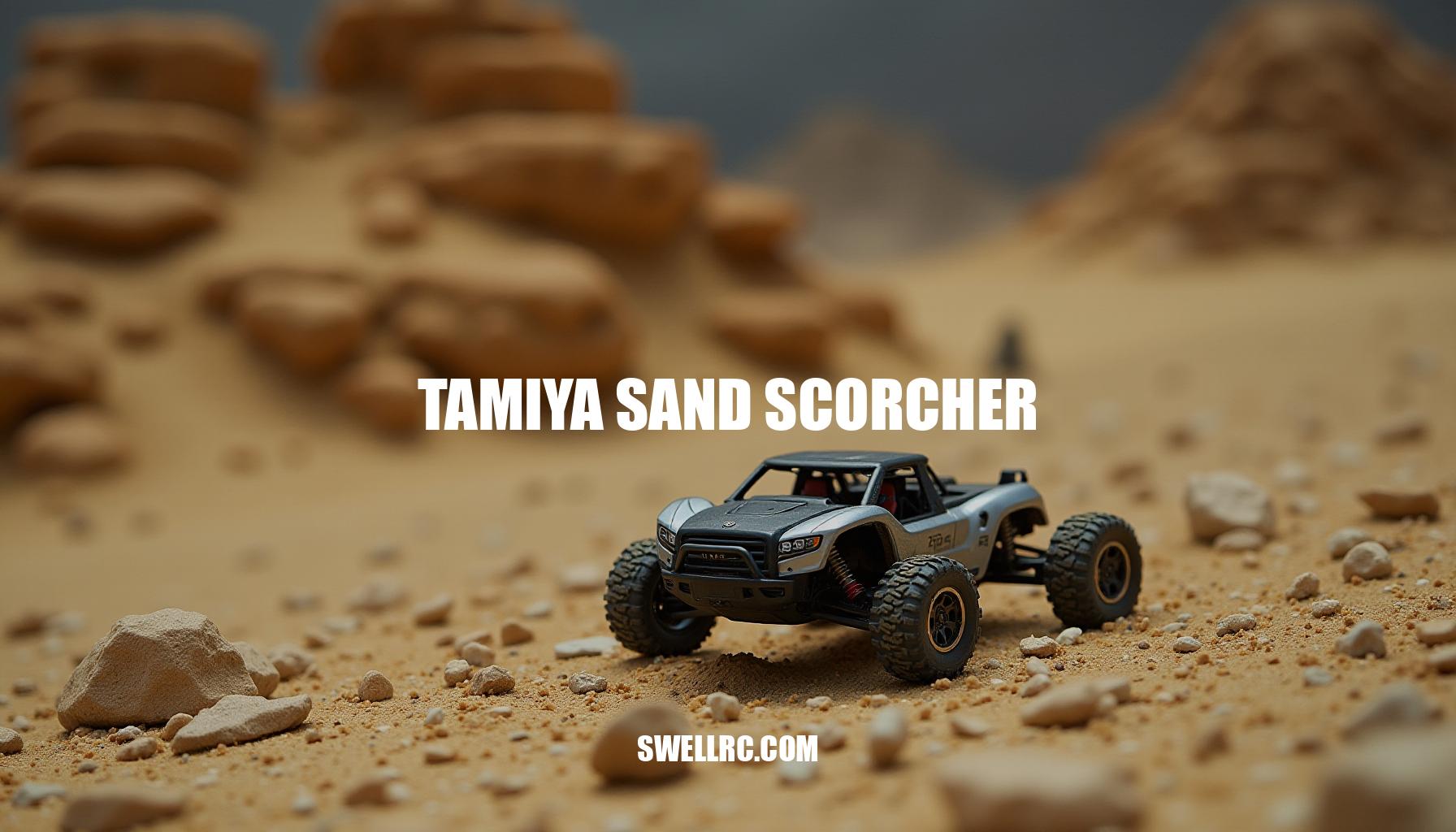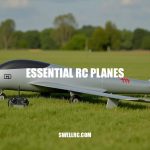Tamiya Sand Scorcher RC Buggy Review
I fell back into the RC rabbit hole on a rainy Saturday, digging through old boxes until a familiar silhouette snapped me straight to 1979: the Tamiya Sand Scorcher. The first time I held a re-release kit again, that hard ABS Beetle shell felt like a time capsule. This is the buggy that made beach runs look real and RC engineering feel personal.
Originally launched in 1979 as part of Tamiya’s Special Racing Buggy (SRB) lineage, the Sand Scorcher fused die-cast metal toughness with a scale Beetle body that still turns heads 40+ years later. My motivation to rebuild one came from the same place as many hobbyists’—restoration projects, late-night forum deep dives, and the urge to relive beachside throttle pulls. Tamiya’s re-release keeps the spirit intact while making it easier to keep these classics going.
In this article, I’ll share what I’ve learned through building, tuning, and driving the Sand Scorcher: its design, handling, upgrades, and the culture that keeps it alive. If the charm of the original pulled you in the way the Tamiya Grasshopper did for a whole generation, you’ll know exactly why this one matters. Whether you’re a fan of vintage radio control or looking to dive into Tamiya classic models, the Sand Scorcher chassis paired with the iconic Tamiya Beetle body remains a standout off-road RC car that continues to inspire enthusiasts.
The Tamiya re-release not only celebrates nostalgia but also ensures that these timeless Tamiya kits stay relevant and enjoyable in today’s hobby landscape.
Section 2: The Historical Legacy — Craftsmanship Ahead of Its Time
The Sand Scorcher is a milestone in the world of 1/10 scale off-road buggies, blending realism and ruggedness when most RC cars of its era were either simple toys or specialized track tools. Tamiya’s 1970s engineering prowess is exemplified in the Sand Scorcher chassis, built on the innovative SRB (Special Racing Buggy) platform that features a robust die-cast aluminum backbone. This design ensures durability and longevity, setting a gold standard for scale realism that still resonates in today’s market.
Unlike modern models such as the drift-oriented Yokomo YD2 RTR or the race-bred 2WD Xray XB2 2023, the Sand Scorcher isn’t about lap times; it’s about capturing tactile realism and mechanical soul through meticulous engineering and authentic details.
Some of its notable design features include:
- SRB platform with metal backbone: a die-cast aluminum chassis and sealed gear case engineered for longevity and performance
- Independent suspension utilizing trailing arms that excel on sand and rough terrains, embodying the spirit of a true 1/10 scale off-road buggy
- Sealed radio box, period-correct, to protect the electronics from dust and spray, ensuring reliability in harsh conditions
- Hard ABS Volkswagen Baja-style body featuring scale bumpers, light buckets, and nerf bars, all contributing to authentic scale realism
- Precisely maintained 1/10 scale proportions that look “right” from every angle, reinforcing Tamiya classic models’ dedication to aesthetic fidelity
This philosophy—to build it strong and make it look real—helped define Tamiya’s identity and served as a major inspiration for the modern scale RC movement, illustrating why the Sand Scorcher remains a beloved classic among enthusiasts.
Section 3: The Build Experience — Where Patience Meets Passion
Unboxing a Sand Scorcher kit is an experience that feels like half workshop, half museum tour. When learning how to build a Tamiya Sand Scorcher, my kit build began with meticulous attention to the gearbox—laying out every shim and gear like a watchmaker—before progressing to the front end and that iconic Tamiya Beetle body. Throughout the process, I discovered helpful tips such as pre-threading self-tapping screws to avoid cracking the ABS plastic, applying thread-lock on metal-to-metal contacts, and resisting over-tightening anything in the delicate ABS shell.
For those interested in RC car restoration or assembling Tamiya kits, these lessons are invaluable.
One crucial step is to ensure waterproofing, especially of the ESC and receiver, if you plan on beach runs; a reliable waterproof ESC setup can make or break a wet sand adventure. Additionally, investing in quality ball bearings pays dividends from the very first spin, smoothing wheel rotation and improving overall performance. Cross-referencing general fabrication tips can speed up the build and minimize errors—see fundamentals in this guide.
| Component | Specification |
|---|---|
| Chassis Type | SRB with die-cast aluminum gearbox and metal backbone |
| Suspension | Independent trailing arms; torsion-style rear with oil dampers on rear |
| Motor | 540 brushed (stock-friendly, mild torque) |
| Body | Hard ABS Tamiya Beetle body (highly paintable; durable with care) |
| Scale | 1/10 off-road buggy |
- Dry-fit the gearbox and inspect gear mesh before sealing to avoid damage
- Pre-tap holes in ABS to prevent stress cracking during assembly
- Shim wheel hubs for smooth rotation and install full ball bearings upfront
- Waterproof ESC and receiver if you plan to run on wet sand or beach terrain
By adhering to these build tips and understanding the core features of the components, anyone attempting their first Sand Scorcher kit build or engaging in an RC car restoration project can achieve a rewarding and durable build. The combination of the classic Tamiya Beetle body, reliable ball bearings, and waterproof ESC ensures optimal performance whether you’re cruising stock or customizing your ride.
Section 4: Performance on the Track — Old Soul, Modern Heart
The Sand Scorcher truly excels where it was born to run: on beach sand. As an off-road RC car, its rear paddles dig forward while the suspension seems to float, making it feel more like a surfboard carving long arcs and rooster tails than a scalpel slicing through terrain. On packed dirt, the Scorcher feels planted yet playful—driving dynamics demand throttle finesse, and a quick jab can rotate the rear end nicely.
While pavement serves for quick shakedowns, this buggy’s DNA is deeply rooted in rougher, natural surfaces.
Compared to modern machines like the brushless, 4WD HPI WR8 Flux or the tough bash-ready Storm RC Car, the Scorcher is slower and more analog—but therein lies its charm. You can feel its drivetrain working intimately, allowing you to tune your setup to the terrain and truly celebrate every clean line. The stock setup offers a mellow, reliable ride; with mild power and good tires, it transforms into a delightful trail-and-beach runner.
Performance pros and cons:
- Pros:
- Authentic handling on sand and loam; incredibly satisfying at scale speeds
- Metal gearbox and SRB hardware enhance durability and allow easy servicing
- Highly responsive to small tuning changes such as tires, dampers, and weight placement
- Cons:
- Not designed as a high-speed basher; jumps and big impacts should be kept modest
- Heavier than modern plastic chassis RC cars; agility is limited on tight tracks
- Sealing and maintenance are crucial when running on wet sand or fine dust
Embracing the vintage radio control experience, the Sand Scorcher stands out with its unique blend of classic design and off-road performance.
While it may not match the blistering speeds of the HPI WR8 Flux comparison or the ruggedness of the Storm RC Car comparison, its authentic driving dynamics on beach sand and loam offer unmatched satisfaction for enthusiasts seeking a connection to terrain and machine.
Section 5: Upgrades and Modifications — Bringing the Classic to Life Again
Modernizing the classic Sand Scorcher is all about enhancing reliability first, then carefully improving speed and steering precision without compromising its beloved vintage charm. To achieve this balance, you should start by installing a full ball bearing kit to replace all the original bushings — this simple yet effective upgrade reduces friction and heat, resulting in cooler, longer runtimes.
Next, integrating a waterproof, programmable ESC provides much smoother throttle control and better braking performance compared to the on/off-ish stock electronics. Pair this with a mild brushless or a hotter brushed motor, ensuring that torque remains reasonable to protect the gearbox. Upgrading to oil-filled shocks and fresh springs lets you tune the rebound behavior depending on whether you’re running on sand or dirt, significantly improving suspension performance.
Steering benefits immensely from a high-torque, metal-gear servo paired with a good servo saver and linkage tweaks, boosting precision and reducing slop. Modernizing the radio system to a 2.4GHz setup and employing a LiPo-ready power system with conservative gearing ties the whole package together, delivering improved responsiveness and runtime.
When it comes to tires, consider paddle tires for sand to maximize traction, or scale all-terrain tires for trail runs. Many electronics like radios, ESCs, servos, and LiPo batteries are cross-platform compatible, so the gear used in popular 1/10 scale off-road buggies such as the Traxxas Jeep or even larger models like the Raminator RC Car can often be seamlessly installed in your Sand Scorcher. This opens up a wide array of upgrade possibilities without extensive modifications.
Below is a mini comparison table highlighting key differences between the stock Sand Scorcher setup and an upgraded build:
| Feature | Stock | Upgraded |
|---|---|---|
| Throttle Feel | On/off-ish | Linear with programmable ESC |
| Top Speed | Modest | Moderate (mild brushless or hotter 540 motor) |
| Steering Precision | Slop-prone | Tight with servo + saver + linkage tweaks |
| Runtime / Temps | Warm with bushings | Cooler, longer with bearings and optimized gearing |
| Maintenance | Frequent screw checks | Longer intervals with thread-lock and bearings |
In addition to these core upgrades, adding lightweight wheels and making further suspension tweaks helps dial in the vehicle’s handling and agility. With the recent Tamiya re-release fueling renewed interest, now is the perfect time to update your Sand Scorcher with the best upgrades for vintage performance and modern reliability.
Section 6: The Culture & Collector Scene — Why It Still Captivates
Ask five collectors why they love the Sand Scorcher and you’ll hear five unique stories—whether it’s cherished beach childhood memories, stirring box-art nostalgia, or the tale of a parent painstakingly building one at the kitchen table. Across the collector community, Sand Scorcher restoration is a popular pursuit, with restoration threads and build journals abounding. Enthusiasts eagerly exchange tips on sourcing original hardware, re-released parts, repro decals, and even 3D-printed accessories, fueling a vibrant market of aftermarket parts.
This strong sense of nostalgia isn’t limited to the Sand Scorcher alone. Other vintage radio control favorites, such as the stunt-ready Tyco Rebound 4×4 and scale trail legends like the RC Nissan Patrol, also enjoy enthusiastic followings. Thanks to timely re-release programs, these icons allow new hobbyists to connect with history without the challenge of hunting for fragile vintage kits.
The importance of parts and support cannot be overstated. Tamiya’s re-release initiatives ensure key SRB components remain available, complementing a thriving aftermarket ecosystem. While original-only bits often surface in auctions and collector circles, opting for re-released parts is typically the wiser choice for RC car restoration enthusiasts aiming to keep their models running strong.
Section 7: Conclusion — The Legacy Rolls On
The Sand Scorcher endures not just as an RC buggy, but as a shining example of an engineering legacy that enthusiasts can experience firsthand. This timeless Tamiya classic model delivers more than just remote control thrills—it offers a unique hands-on joy through its die-cast backbone frame and authentic Beetle bodywork. Unlike modern plug-and-play vehicles that focus on instant gratification, the Sand Scorcher invites builders to engage with the art of assembly, mindful tuning, and off-road adventures.
For fans of heritage and authentic off-road RC cars, the Sand Scorcher bridges the gap between past and present. Whether you’re restoring a cherished shelf queen or putting together a dependable beach runner, you are actively preserving a vibrant piece of RC history. The experience of building, maintaining, and driving this classic vehicle embodies the spirit of creativity and craftsmanship that modern kits often lack.
- Engineering Legacy: Precision die-cast parts that stand the test of time.
- Hands-On Joy: Rewarding assembly process for enthusiasts of all levels.
- RC Buggy Heritage: A beloved model that celebrates classic off-road performance.
- Tamiya Classic Models: Renowned for quality and attention to detail.
- Off-Road RC Car: Built for the thrills of sandy terrains and rugged tracks.
| Feature | Description |
|---|---|
| Die-Cast Backbone | Provides sturdy chassis support and durability. |
| Beetle Bodywork | Iconic design adding character and style. |
| Assembly & Tuning | Encourages patience and skill development. |
| Performance | Optimized for sandy off-road conditions. |
In embracing the Sand Scorcher, you aren’t just driving an off-road RC car—you’re keeping the legacy alive. Build it with care, drive it with passion, and maintain it with pride, fueling a tradition that continues to roll forward.
Frequently Asked Questions
- What makes the Tamiya Sand Scorcher a classic RC car?
Its 1979 SRB design combined die-cast metal strength, a sealed gearbox, and a scale Volkswagen Baja Bug body. That blend of realism, durability, and engineering detail set a standard that still defines Tamiya’s legacy. - Is the Tamiya Sand Scorcher good for beginners?
For patient beginners who want to learn by building, yes. The kit teaches fundamentals and rewards careful assembly. Driving is friendlier on sand and trails than on tight tracks. Absolute newcomers wanting maximum speed and forgiveness may prefer a modern RTR first. - What’s the difference between the original and re-release Sand Scorcher?
The re-release preserves the look and architecture but benefits from updated materials, tire compounds, and modern electronics compatibility. Purists prize original-era parts and box art, while runners appreciate the durability and availability of re-re components. - How durable is the Tamiya Sand Scorcher for off-road driving?
Very durable for its intended use—sand, light trails, and moderate bumps—thanks to the metal gearbox and SRB hardware. It’s not a high-jump basher; sealing the radio box and performing regular maintenance are key for long life. - What upgrades improve the Sand Scorcher’s performance?
Start with full ball bearings and a waterproof programmable ESC. Add oil shocks, a stronger servo with a good saver, and either a mild brushless or hotter 540 brushed motor. Tire choice and gearing complete the transformation. - Are parts for the Tamiya Sand Scorcher still available today?
Yes. Tamiya’s re-release keeps most SRB parts in circulation, the aftermarket is active, and collector communities provide sources for rare originals. For runners, re-re parts are usually the most practical choice.



